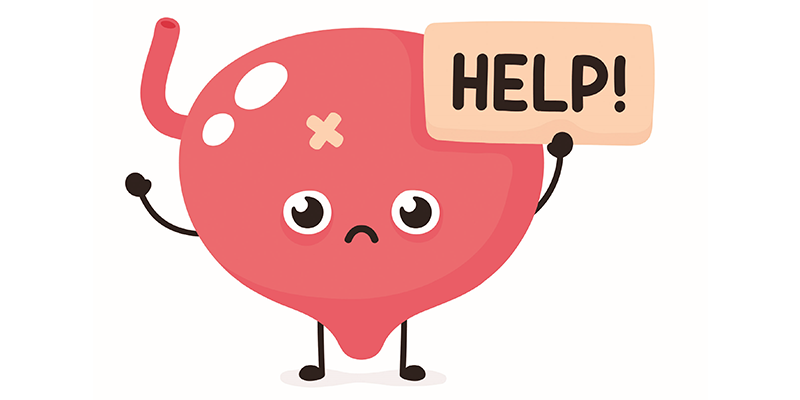Back
Understanding Post Void Residual (PVR) and Its Impact on Bladder Health
By Shannon Strauch, PTA, STMT-1 on 4/12/2024

Post Void Residual (PVR) is a crucial aspect of bladder health that often goes unnoticed until it causes problems. In this blog post, we'll delve into what PVR is, why it's important, how it's measured, and its implications for overall urinary health.
What is Post Void Residual (PVR)?
Post Void Residual refers to the amount of urine left in the bladder after urination. Normally, the bladder should empty completely during urination. However, in some cases, a residual amount of urine remains, which can lead to various urinary issues.Why is Post Void Residual Important?
Understanding PVR is essential because it can indicate underlying bladder problems. A high PVR can be a sign of bladder dysfunction, urinary retention, or other conditions that affect bladder emptying. Conversely, a low PVR is generally considered normal.Measuring Post Void Residual:
There are several methods to measure PVR:Ultrasound: A non-invasive method that uses sound waves to visualize the bladder and determine the amount of residual urine.
Catheterization: A more invasive method where a catheter is inserted into the bladder to directly measure the remaining urine.
Bladder Scan: A handheld device that uses ultrasound to measure PVR without catheterization.
Implications of High Post Void Residual:
Urinary Retention: High PVR can indicate incomplete bladder emptying, leading to urinary retention and potential complications.
Bladder Infections: Residual urine provides a breeding ground for bacteria, increasing the risk of urinary tract infections (UTIs), which can spread to the kidneys.
Bladder Overdistension: Chronic high PVR can lead to bladder overdistension, weakening bladder muscles and impacting bladder function.
Causes of High Post Void Residual:
Bladder Outlet Obstruction: Conditions like enlarged prostate in men or pelvic organ prolapse in women can obstruct urine flow, leading to high PVR.
Neurological Disorders: Conditions such as multiple sclerosis (MS) or spinal cord injuries can affect bladder control and emptying.
Medications: Certain medications can interfere with bladder function, causing urinary retention and high PVR.
Pelvic Floor Dysfunctions: Tightness in the pelvic floor muscles, weak pelvic floor muscles, or the inability to coordinate the pelvic floor muscles properly can interfere with bladder function
Managing Post Void Residual:
Treatment of Underlying Conditions: Addressing the root cause of high PVR, such as treating prostate enlargement or managing neurological disorders.
Bladder Training: Techniques to improve bladder emptying and reduce residual urine, including timed voiding and pelvic floor exercises.
Catheterization: In severe cases of urinary retention, intermittent or indwelling catheters may be necessary to empty the bladder.
Pelvic floor therapy can play a significant role in addressing Post Void Residual (PVR) and improving bladder health. Here’s how:
Pelvic Floor Muscle Strengthening: Pelvic floor therapy involves targeted exercises to strengthen the muscles that support the bladder and control urination. Stronger pelvic floor muscles can improve bladder emptying and reduce the likelihood of high PVR.
Bladder Training: Pelvic floor therapists can guide individuals in bladder training techniques. This may include scheduled voiding times, learning to relax the pelvic floor muscles during urination, and techniques to improve bladder emptying, thereby reducing PVR.
Biofeedback
:
Pelvic floor therapy often incorporates biofeedback technology. This involves using sensors to monitor pelvic floor muscle activity during exercises. By providing real-time feedback, biofeedback helps individuals learn proper muscle engagement and relaxation, which can improve bladder function and reduce PVR.Education and Lifestyle Modifications
:
Pelvic floor therapists educate individuals about healthy bladder habits and lifestyle modifications that can impact PVR. This may include guidance on optimal fluid intake, dietary changes to support bladder health, and strategies to avoid habits that contribute to bladder dysfunction.Addressing Pelvic Floor Dysfunction
:
In cases where pelvic floor dysfunction contributes to high PVR, pelvic floor therapy targets specific issues such as muscle tightness, weakness, or coordination problems. By addressing these underlying dysfunctions, therapy can improve bladder emptying and reduce PVR.Collaborative Approach
:
Pelvic floor therapy often involves a multidisciplinary approach, working in collaboration with urologists, gynecologists, or other healthcare providers. This ensures comprehensive care that addresses both the pelvic floor muscles and any underlying medical conditions contributing to PVR.
Conclusion
: Post Void Residual is a critical aspect of bladder health that deserves attention and understanding. Monitoring PVR, especially in individuals with bladder symptoms or risk factors, can help identify and manage underlying bladder issues effectively. Overall, pelvic floor therapy can be highly effective in improving bladder function, reducing PVR, and enhancing overall urinary health. It offers personalized treatment strategies tailored to each individual’s needs, promoting better bladder control and quality of life.Read More:
How Chronic Pelvic Congestion in Men Contributes to Prostatitis By Shannon Strauch, PTA, STMT-1 on 12/11/2024 How lymphatic issues can cause symptoms of prostatitis Prostatitis and Tight Pelvic Floor Muscles: A Comprehensive Guide By Shannon Strauch, PTA, STMT-1 on 12/10/2024 How a tight pelvic floor can be the reason for prostatitis symptoms
Are you ready to live pain free?
Request An Appointment